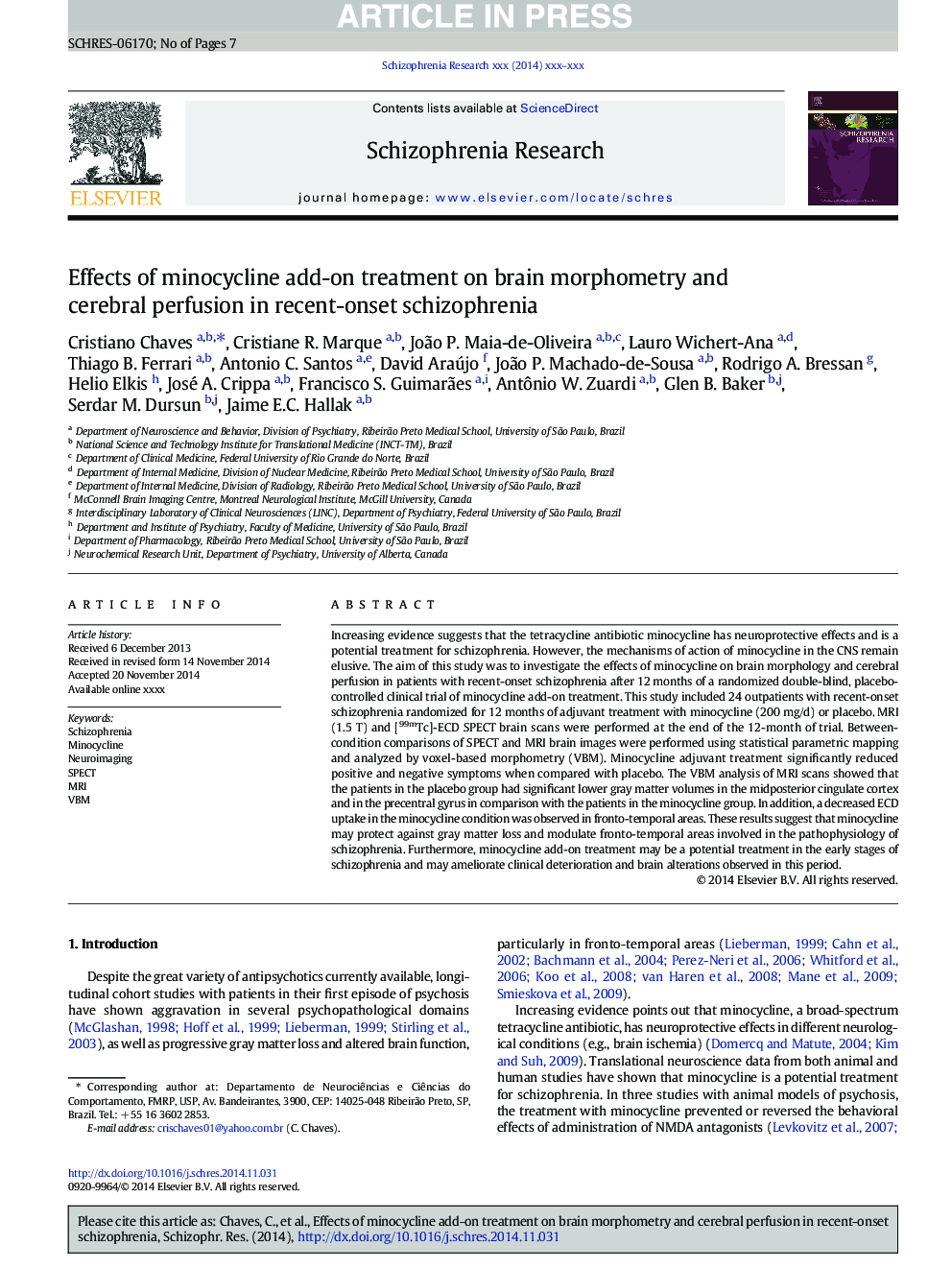| Article ID | Journal | Published Year | Pages | File Type |
|---|---|---|---|---|
| 6824439 | Schizophrenia Research | 2015 | 7 Pages |
Abstract
Increasing evidence suggests that the tetracycline antibiotic minocycline has neuroprotective effects and is a potential treatment for schizophrenia. However, the mechanisms of action of minocycline in the CNS remain elusive. The aim of this study was to investigate the effects of minocycline on brain morphology and cerebral perfusion in patients with recent-onset schizophrenia after 12Â months of a randomized double-blind, placebo-controlled clinical trial of minocycline add-on treatment. This study included 24 outpatients with recent-onset schizophrenia randomized for 12Â months of adjuvant treatment with minocycline (200Â mg/d) or placebo. MRI (1.5Â T) and [99mTc]-ECD SPECT brain scans were performed at the end of the 12-month of trial. Between-condition comparisons of SPECT and MRI brain images were performed using statistical parametric mapping and analyzed by voxel-based morphometry (VBM). Minocycline adjuvant treatment significantly reduced positive and negative symptoms when compared with placebo. The VBM analysis of MRI scans showed that the patients in the placebo group had significant lower gray matter volumes in the midposterior cingulate cortex and in the precentral gyrus in comparison with the patients in the minocycline group. In addition, a decreased ECD uptake in the minocycline condition was observed in fronto-temporal areas. These results suggest that minocycline may protect against gray matter loss and modulate fronto-temporal areas involved in the pathophysiology of schizophrenia. Furthermore, minocycline add-on treatment may be a potential treatment in the early stages of schizophrenia and may ameliorate clinical deterioration and brain alterations observed in this period.
Related Topics
Life Sciences
Neuroscience
Behavioral Neuroscience
Authors
Cristiano Chaves, Cristiane R. Marque, João P. Maia-de-Oliveira, Lauro Wichert-Ana, Thiago B. Ferrari, Antonio C. Santos, David Araújo, João P. Machado-de-Sousa, Rodrigo A. Bressan, Helio Elkis, José A. Crippa, Francisco S. Guimarães,
